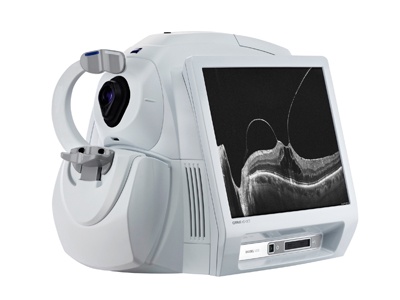Equipment
01.
Automated Visual Field Analyser
An automated visual field analyser is a diagnostic tool used by optometrists to measure a patient’s visual field.
This machine projects a series of light stimuli into the patient’s peripheral vision, and the patient responds to indicate when they see the light.
The results of this test can help diagnose and monitor conditions such as glaucoma, macular degeneration, and other visual disorders that affect the visual field.
The data collected by the automated visual field analyser provides valuable information for the optometrist to create a personalised treatment plan for the patient.

02.
Corneal Topographer
A corneal topographer is a diagnostic tool used by optometrists to map the surface of the cornea.
This machine captures a detailed 3D image of the cornea, allowing the optometrist to analyse the shape, curvature, and thickness of the cornea.
This information is critical for the diagnosis and management of conditions such as keratoconus, astigmatism, and other corneal abnormalities.
The data collected by the corneal topographer provides valuable information for the optometrist to create a personalised treatment plan for the patient, including the fitting of contact lenses and the evaluation of refractive surgery candidacy

03.
Digital Retinal Camera
A digital retinal camera is a diagnostic tool used by optometrists to capture high-resolution images of the back of the eye.
This machine takes a digital photograph of the retina, which is the light-sensitive tissue lining the inside of the eye, and allows the optometrist to examine the optic nerve, blood vessels, and other structures of the eye.
This information is essential for the early detection and management of conditions such as glaucoma, diabetic retinopathy, and macular degeneration.
The images captured by the digital retinal camera provide valuable information for the optometrist to create a personalised treatment plan for the patient, including the monitoring of disease progression and the evaluation of treatment efficacy.

04.
Optical Coherence Tomographer (OCT)
An optical coherence tomographer (OCT) is a diagnostic tool used by optometrists to capture detailed images of the layers of the retina and optic nerve.
This machine uses light waves to create high-resolution cross-sectional images of the eye’s internal structures, allowing the optometrist to analyse the thickness and integrity of these structures.
This information is critical for the early detection and management of conditions such as macular degeneration, glaucoma, and diabetic retinopathy.
The images captured by the OCT provide valuable information for the optometrist to create a personalised treatment plan for the patient, including the monitoring of disease progression and the evaluation of treatment efficacy.

